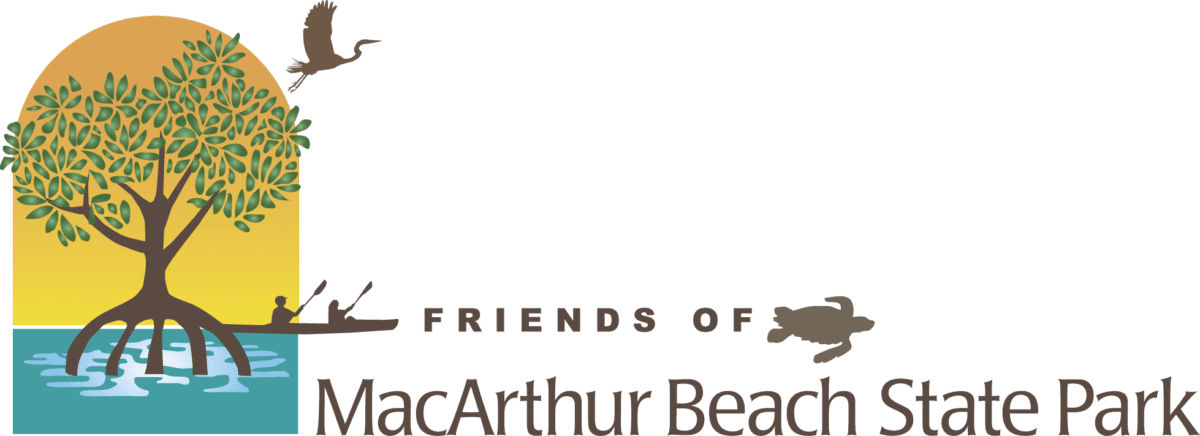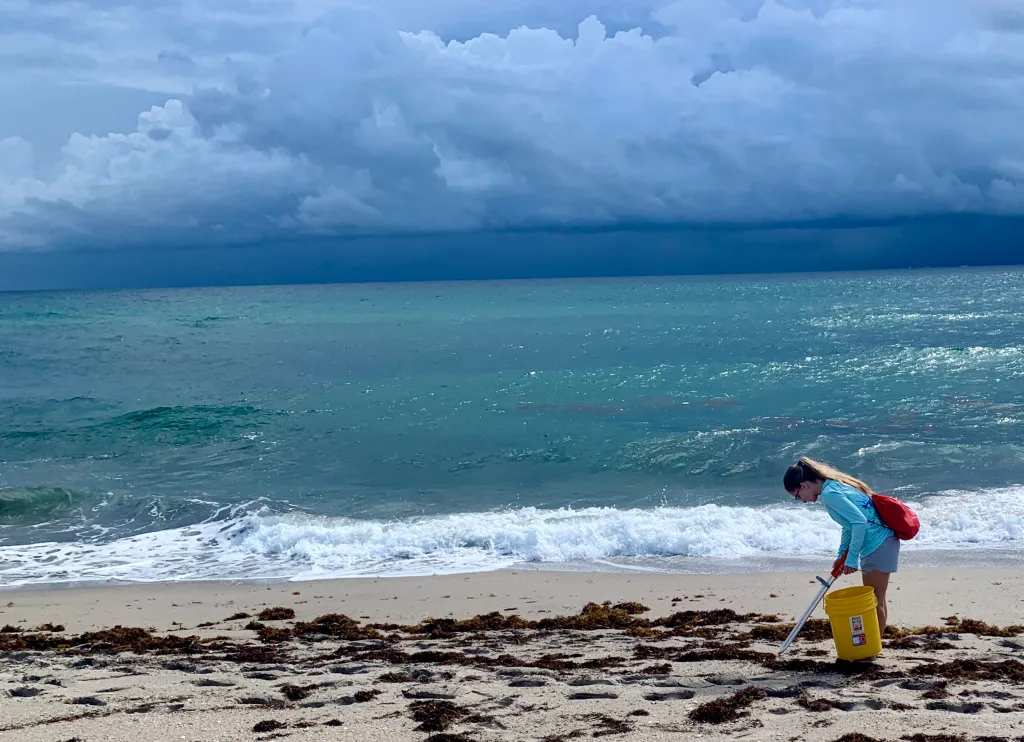International Coastal Cleanup Day draws 80 to John D. MacArthur Beach State Park.
Since 2018, volunteers have pulled 3,000 pounds of trash off the beach at the John D. MacArthur Beach State Park.
On Saturday, about 80 volunteers came out for International Coastal Cleanup Day, braved stormy skies, and added another 172 pounds to the total.
Doesn’t sound like much but the pickings were scarce.
“Some things are very tiny and I can’t pick them up,” volunteer PJ Sullivan, 9, told his grandmother to explain using his ungloved hand rather than a claw-like pincer to grab a scrap.

PJ is a cleanup veteran. He attended the summer camp offered at the state park at the eastern edge of PGA Boulevard on Singer Island. His grandmother, Susan Sullivan of Palm Beach Gardens, appreciated his effort.
“The environment is really suffering. Any positive thing we can do, we should do,” she said, while watching PJ place another sliver of plastic into his bucket. “It’s such a beautiful park. We want to keep it that way.”
MacBeach was a favorite nude swimming hole for Gardens founder John D. MacArthur. After his death in 1978, he gave it to his foundation, which proposed building 600 homes on the mangrove-lined slice of beach and waterway.
Under stiff criticism, the foundation agreed to allow the land to be preserved, selling it to the state for $23.12 million. To get a tax credit, the foundation donated 82 acres to Palm Beach County, including a mile of beachfront, a gift it valued at an additional $22.1 million.
The beach is among the most isolated in north county, as visitors must pay a park entrance fee of $5 and cross a one-third mile bridge over a stunning estuary to go swimming. It also offers kayak and paddle board rentals.
Friends of MacArthur Beach State Park formed in 1990 to protect and maintain the 436-acre park, which includes Munyon Island to the south. The Friends not only weigh the debris volunteers cart off the beach, they send it to researchers to document what is washing ashore.

MacBeach was a favorite nude swimming hole for Gardens founder John D. MacArthur. After his death in 1978, he gave it to his foundation, which proposed building 600 homes on the mangrove-lined slice of beach and waterway.
Under stiff criticism, the foundation agreed to allow the land to be preserved, selling it to the state for $23.12 million. To get a tax credit, the foundation donated 82 acres to Palm Beach County, including a mile of beachfront, a gift it valued at an additional $22.1 million.
The beach is among the most isolated in north county, as visitors must pay a park entrance fee of $5 and cross a one-third mile bridge over a stunning estuary to go swimming. It also offers kayak and paddle board rentals.
Friends of MacArthur Beach State Park formed in 1990 to protect and maintain the 436-acre park, which includes Munyon Island to the south. The Friends not only weigh the debris volunteers cart off the beach, they send it to researchers to document what is washing ashore.

Most of the debris is small, Friends Executive Director Veronica Frehm said. “Micro is important, but light,” she said, standing near a scale off the boardwalk on the parking lot side of the park. “Anybody can come and help,” she added.
For Julie Miles, Friends board president and a Stuart resident, it’s all about preserving paradise.
“To me, coming to Mac Beach is a relaxing step back in time to Old Florida,” she said. “I want my grandchildren to be able to do the same thing.”
The cleanup day, sponsored by the Ocean Conservancy, has tapped 17 million volunteers to collect more than 348 million pounds of trash worldwide since 1986.
For the 20 or so Florida Atlantic University students who came to Mac Beach to help, the visit would add to their community service hours. But it also opened some eyes.

Isabella Passanisi, an FAU Honors College marine biology major, has enough volunteer hours already but came out anyway. Pickings were slim, she said, but “the smaller trash, that’s such a problem for the ecosystem.”
As dark skies and distant lightning forced volunteers to retreat from the park’s 1.6-mile-long beach, Odette Terrazas, a junior writing major, told a friend, “I think Juno is worse. We might go there after.”
Back at the beachside launch point, Sarah Gore, an intern at Jonathan Dickinson State Park in Martin County, exclaimed “What is that? Is that a bike handle?” about a particularly odd, mangled, black tube-like item dragged back by a volunteer.
“We got a toy dolphin. A sock,” added Michelle Casagni, a Lake Park software engineer volunteering with the state park service. “We get some strange stuff.”


